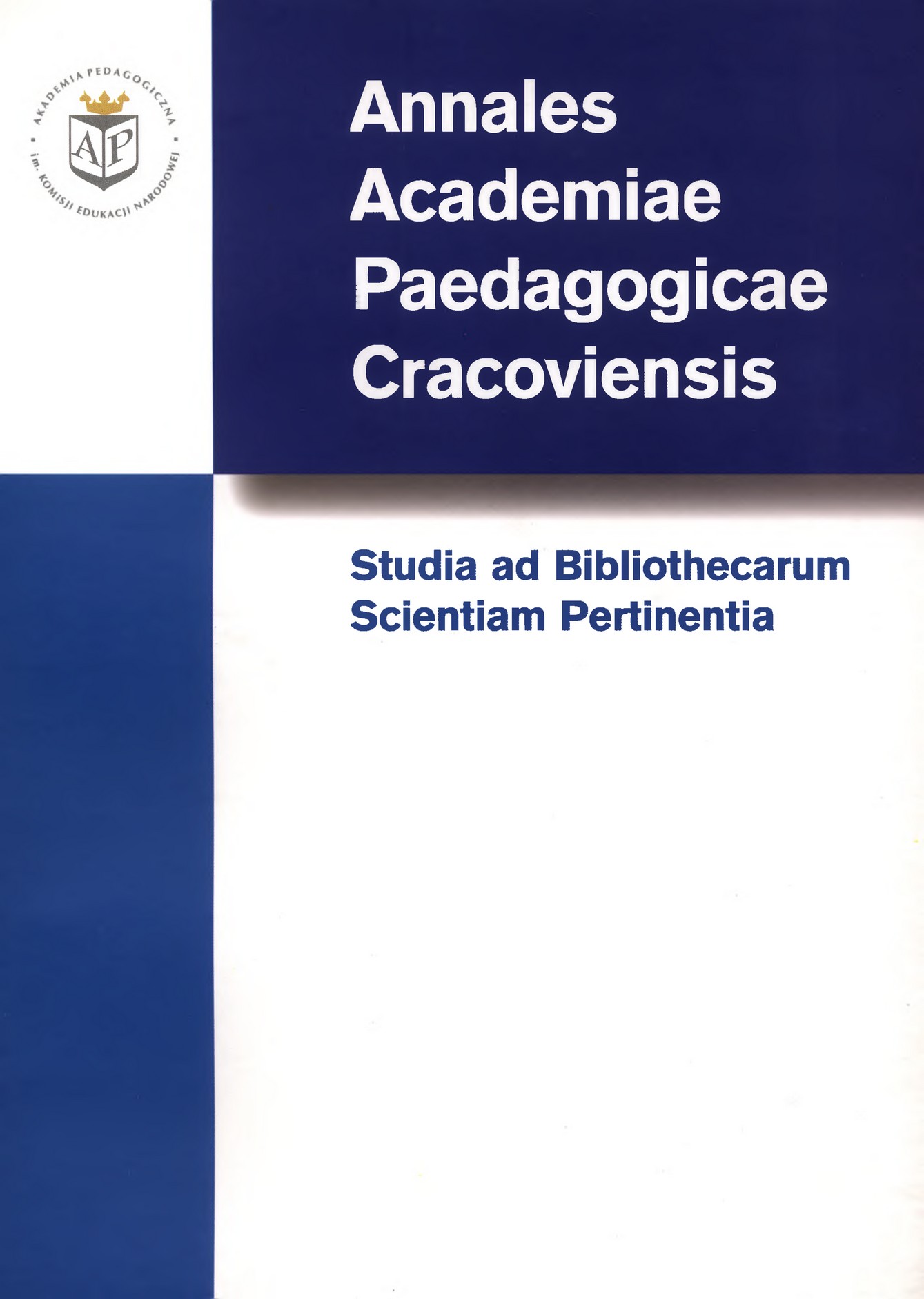Gadzinowy “katolicki organ prasowy Generalnego Gubernatorstwa” w kręgu zagadnień kultury (1939–1945)
Słowa kluczowe:
Kurier Częstochowski, Goniec Częstochowski, historia, prasa gadzinowa, Polska, 1939-1945 r., CzęstochowaAbstrakt
[The Reptile “Catholic press Organ of the General Government” within the Sphere of Cultural Issues]The subject of the analyses and considerations of this essay is the informa-tional-propaganda periodical “Goniec Częstochowski” [“The Częstochowa Messenger”] (called “Kurier Częstochowski” [“The Częstochowa Courier”] from November 4th, 1939 on), started by the Nazi occupiers on November 14th, 1939 and published until January 16, 1945. The paper (initially issued 3 times a week, it became a daily on November 4th, 1939) was chronologically the first Polish-language German reptile newspaper in the Polish lands, hav-ing been brought into being earlier than such representative dailies as the “capital” “Goniec Krakowski” [“Kraków Messenger”] or the “Nowy Kurier Warszawski” [“New Warsaw Cou-rier”], as well as the local, district-level “Dziennik Radomski” [“Radom Journal”]. On the territory of the General Government, the “The Częstochowa Messenger / Częstochowa Cou-rier” was one of a very few propaganda periodicals published outside of the district authori-ties' headquarters. Another specific characteristic of the paper was its nomination by the Ger-mans as the “Catholic press organ of the General Government”, for which reason it was also distributed beyond its primary area of circulation, which comprised Częstochowa, Radomsko, and Piotr-ków Trybunalski. Indeed, the “Catholic” nature of the Częstochowa daily was manifested only in the existence of a weekly religious supplement (of varying content and title), which didn't have any substantial influence on the “Courier's” main sections and politi-cal-propaganda materials, always strictly subservient to the needs of the Third Reich. Yet that which interests the author of this article is not so much the publication's history and political content, or the reflection on its pages of the day-to-day wartime existence of the city's inhabitants, in turn (these questions have been penetrated earlier by such researchers as Witold Mielczarek and Tomasz Mielczarek), but the “Częstochowa Courier's” relationship to cul-tural-artistic problems that, obviously, could only arise within the extraordinarily restrictive bounds imposed by the Nazi censorship organs, as well as the norms of the official cultural pol-icy applied to Poles under the General Government. It seems that in this area (neglected up till now by researchers as well as bibliographers), the reptile publication from Częstochowa, as compared with publications similar to it, maintained a certain originality and personality. Principally, the paper published a number of religious poems - unproblematic in terms of censorship - by selected known Polish authors (including lyric works by Jan Kochanowski, Ignacy Krasicki, Cyprian Norwid and Leopold Staff). It also undertook a series of inspira-tional and “promotional” activities, the goal of which was to revitalise the official “literature of the General Government”, which was developing under German tutelage. This end was served primarily by a literary contest organised in 1941, for serial fiction works. Overall there were 22 such works by Polish authors printed in the “Courier” that were, at least in part, the fruit of this contest. Amongst the mostly scribbling sensational-adventure, crime or romance pieces, the debut of the only “real” writer among this group, Krystyna Wajcht (active after the war under the name of Krystyna Salaburska, maily in the area of children's literature), distinguished itself somewhat more favourably. Thanks to “connections” now not known, the Częstochowa reptile newspaper got the authorities' permission - inadmissible on the pages of other Polish-language publications - to print translations of works by modern German writers, representatives of the apolitical popular circuit (Otto Franz Heinrich, Otto Willi Gail). It clearly had a preference for Scandanavian and Dutch writing also. A unique event as well, on the scale of all non-clandestine literary writing in the GG, was the “Courier's” publication in 1942 of a cycle of humoresques by Soviet satirist Michail Zoszczenko. The Częstochowa reptile newspaper was also a relatively dependable recorder and reviewer of all of the German-approved, non-clandestine cultural-artistic events organised in Częstochowa, based for the most part on “guest” appearances by artists from - most often - Warsaw and Krakow. Among other things, the paper recorded and described 39 local theatricalstage events on its pages, and 7 musical performances. Information concerning cul-tural events outside of Częstochowa (almost exclusively in Krakow and Warsaw), however, was treated selectively, didn't have a systematic character, and disappeared all but completely after 1943. This article compiles a documentary annex, chronologically listing all of Częstochowa's non-clandestine cultural-artistic endeavours that were covered and discussed in the “Często-chowa Courier”, and took place between April of 1940 and January of 1945 (52 events overall, which most often took place in the hall of the local fire department). In the opinion of the author of this essay, using the “Częstochowa Courier” as a source reliable at least in terms of basic facts - allows for revision of the view, prevalent until now, that attests to the non-existence in Częstochowa of any open manifestations of cultural life under the Nazi occupation.
Pobrania
Opublikowane
2003-03-31
Jak cytować
Woźniakowski, K. (2003). Gadzinowy “katolicki organ prasowy Generalnego Gubernatorstwa” w kręgu zagadnień kultury (1939–1945). AUPC Studia Ad Bibliothecarum Scientiam Pertinentia, 2, 171–203. Pobrano z https://sbsp.uken.krakow.pl/article/view/1037
Numer
Dział
Artykuły / Articles

